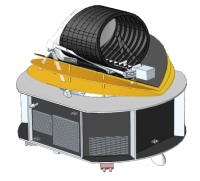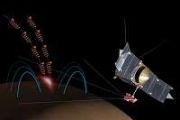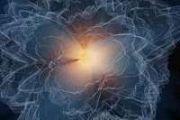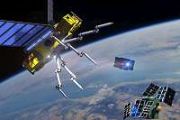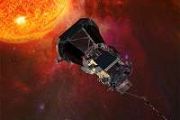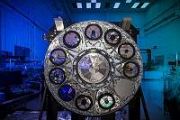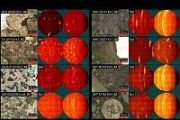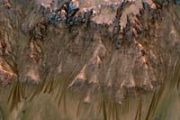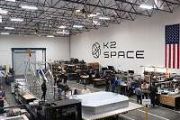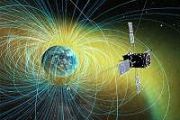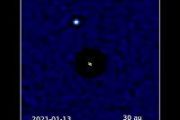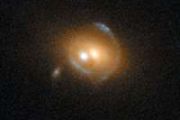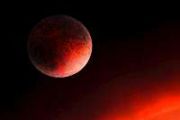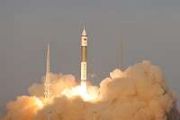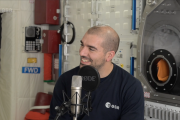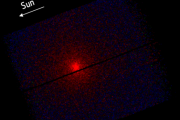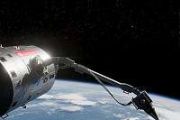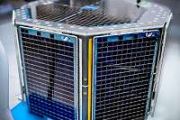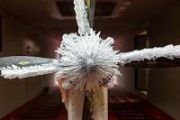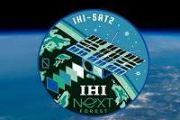ARIEL DEFINITION STUDY REPORT:
November 2020
ARIEL ASSESSMENT STUDY REPORT:
March 2017
ARIEL YELLOW BOOK TECHNICAL NOTES:
Link to all Technical Notes
ARIEL SCIENTIFIC PROPOSAL & OUTCOME OF ESA CDF STUDY:
Link to ESA website
Ariel Special Issue in Experimental Astronomy: coming soon!
Barnes, J.R. et al. Exoplanet mass estimation for a sample of targets for the Ariel mission;
Barstow, J. et al. A retrieval challenge exercise for the Ariel mission;
Brucalassi, A. et al. Determination of stellar parameters for Ariel targets: a comparison analysis between different spectroscopic methods;
Caines, H. et al. Simulation of Ephemeris Maintenance of Transiting Exoplanets’
Changeat et al. Disentangling Atmospheric Compositions of K2-18 b with Next Generation Facilities;
Charnay, B. et al. A survey of exoplanet phase curves with Ariel;
Chioetto, P . et al. Qualification of the thermal stabilization, polishing and coating procedures for the aluminum telescope mirrors of the Ariel mission;
Danielski, C. et al. The homogeneous characterisation of Ariel host stars;
Demangeon, O. et al. Need, Scale and Feasibility of an Ariel radial velocity campaign;
Encrenaz, T. et al. Observability of temperate exoplanets with Ariel;
Ferus M. et al. Ariel – a window to the origin of life on early Earth?
Focardi, M. et al. The Ariel Instrument Control Unit its role within the Payload and B1 Phase design;
Garai, Z. et al. Grazing, non-transiting disintegrating exoplanets observed with the planned Ariel space observatory A case study using Kepler-1520b;
Garcia Perez, A. et al. Thermoelastic evaluation of the Payload Module of the Ariel mission;
Guilluy, G. et al. On The Synergy Between Ariel and Ground-Based High-Resolution Spectroscopy;
Haswell, C. A. Extended Use of the Ariel Core Survey Data;
Helled, R. et al. Ariel Planetary Interiors White Paper; Ito, Y. et al. Detectability of mineral atmospheres with Ariel;
Kiss, C. et al. Ancillary science with Ariel: Feasibility and scientific potential of young star observations;
Kokori A. et al. ExoClock Project: An open platform for monitoring the ephemerides of Ariel targets with contributions from the public;
Morales, J.C. et al. Ariel scheduling using Artificial Intelligence;
Morello, G. et al. The Ariel 0.6 – 7.8 μm stellar limb- darkening coefficients;
Morgante, G. et al. The thermal architecture of the ESA Ariel payload at the end of Phase B1;
Moses, J.I. et al. Chemical variation with altitude and longitude on exo-Neptunes: Predictions for Ariel phase- curve observations;
Pearson C. et al. The Ariel Ground Segment and Instrument Operations Science Data Centre;
Seli, B. et al. Stellar flares with Ariel;
Szabó, G. et al. High-precision photometry with Ariel;
Turrini, D. et al. Exploring the link between star and planetary formation with Ariel;
Wolkenberg, P. et al. Effect of clouds on emission spectra for Super Venus within Ariel;
Peer reviewed publications about Ariel
Mugnai, L. V.; Pascale, E.; Edwards, B.; Papageorgiou, A.; Sarkar, S. (2020); ArielRad: the Ariel radiometric model; Experimental Astronomy, Volume 50, Issue 2-3, p.303-328
Sarkar S., E. Pascale, A. Papageorgiou, L. Johnson, I. Waldmann, ExoSim: the Exoplanet Observation Simulator, Experimental Astronomy, 2020, arXiv:2002.03739.
Nikolaou N. et al. Lessons Learned from the 1st ARIEL Machine Learning Challenge: Correcting Transiting Exoplanet Light Curves for Stellar Spots , AJ, 2020.
Bourgalais, J., Carrasco, N., Changeat, Q., Venot, O., Jovanović, L., Pernot, P., Tennyson, J., Chubb, Katy L., Yurchenko, Sergey N., & Tinetti, G. (2020), Ions in the Thermosphere of Exoplanets: Observable Constraints Revealed by Innovative Laboratory Experiments. The Astrophysical Journal, Volume 895, Issue 2, id.77.
Pluriel, W.; et al. (2020), ARES. III. Unveiling the Two Faces of KELT-7 b with HST WFC3 , The Astronomical Journal, 160, 112
Skaf N. et al., (2020) ARES II: Characterising the Hot Jupiters WASP-127 b, WASP-79 b and WASP-62 b with HST, AJ, 160, 109.
Edwards B. N. et al. (2020), ARES I: WASP-76 b, A Tale of Two HST Spectra, Accepted for publication in AJ, arXiv:2005.02374.
Min, M.; Ormel, C. W.; Chubb, K.; Helling, C.; Kawashima, Y. (2020); The ARCiS framework for exoplanet atmospheres. Modelling philosophy and retrieval; Astronomy & Astrophysics, Volume 642, id.A28, 35.
D. Turrini, A. Zinzi and J. A. Belinchon (2020) Normalized angular momentum deficit: A tool for comparing the violence of the dynamical histories of planetary systems, A&A, 636, A53.
Changeat, Q., Edwards, B., Al-Refaie, A., F., Tsiaras, A., Waldmann, I. P., Tinetti, G., Disentangling Atmospheric Compositions of K2-18 b with Next Generation Facilities. Submitted ApJ, arXiv:2003.01486.
Petralia, A., Micela, G., (2020) Principal Component Analysis to correct data systematics. Case study: K2 light curves, Experimental Astronomy, 49, 97.
Barstow J. K., Q. Changeat, R. Garland, M. R Line, M. Rocchetto, I. P Waldmann (2020), A comparison of exoplanet spectroscopic retrieval tools, Monthly Notices of the Royal Astronomical Society, Volume 493, Issue 4, p.4884-4909.
Changeat Q., Al-Refaie A., Mugnai L.V., Edwards B., Waldmann I. P., Pascale E., Tinetti G. (2020), Alfnoor: A Retrieval Simulation of the Ariel Target List, The Astronomical Journal, 160, 80, 2020.
Changeat Q., Keyte L., Waldmann I. P., Tinetti G. (2020), Impact of planetary mass uncertainties on exoplanet atmospheric retrievals, The Astrophysical Journal, 896, 107, 2020.
Changeat Q., B. Edwards, I. P. Waldmann, and G. Tinetti, Toward a More Complex Description of Chemical Profiles in Exoplanet Retrievals: A Two-layer Parameterization, The Astrophysical Journal, 886 39, 2019.
Edwards, B. N.; L. Mugnai, G. Tinetti, E. Pascale, and S. Sarkar (2019) An Updated Study of Potential Targets for Ariel, AJ, 157 242.
Middleton K. F. et al., An integrated payload design for the atmospheric remote-sensing infrared exoplanet large-survey (ARIEL): results from phase A and forward look to phase B1, 2019, Proceedings of the SPIE, Volume 11180, id. 1118036, 7 pp.
Sarkar, S. et al., Stellar pulsation and granulation as noise sources in exoplanet transit spectroscopy in the ARIEL space mission, Monthly Notices of the Royal Astronomical Society, 481, 3, p. 2871-2877, 2018.
Tinetti, G., Drossart, P., Eccleston, P. et al., A chemical survey of exoplanets with ARIEL, Exp Astron (2018) 46: 135. https://doi.org/10.1007/s10686-018-9598-x
Venot, O., Drummond, B., Miguel, Y. et al., A better characterization of the chemical composition of exoplanets atmospheres with ARIEL, Exp Astron (2018) 46: 101. https://doi.org/10.1007/s10686-018-9597-y
Zingales, T., Tinetti, G., Pillitteri, I. et al., The ARIEL mission reference sample, Exp Astron (2018) 46: 67. https://doi.org/10.1007/s10686-018-9572-7
Turrini, D., Miguel, Y., Zingales, T. et al., The contribution of the ARIEL space mission to the study of planetary formation, Exp Astron (2018) 46: 45. https://doi.org/10.1007/s10686-017-9570-1
Encrenaz, T., Tinetti, G. & Coustenis, A., Transit spectroscopy of temperate Jupiters with ARIEL: a feasibility study, Exp Astron (2018) 46:31.https://doi.org/10.1007/s10686-017-9561-2
Puig, L., Pilbratt, G., Heske, A. et al., The Phase A study of the ESA M4 mission candidate ARIEL, Exp Astron (2018) 46: 211. https://doi.org/10.1007/s10686-018-9604-3
Focardi, M., Pace, E., Farina, M. et al., The ARIEL Instrument Control Unit design, Exp Astron (2018) 46: 1. https://doi.org/10.1007/s10686-017-9560-3
more publications
